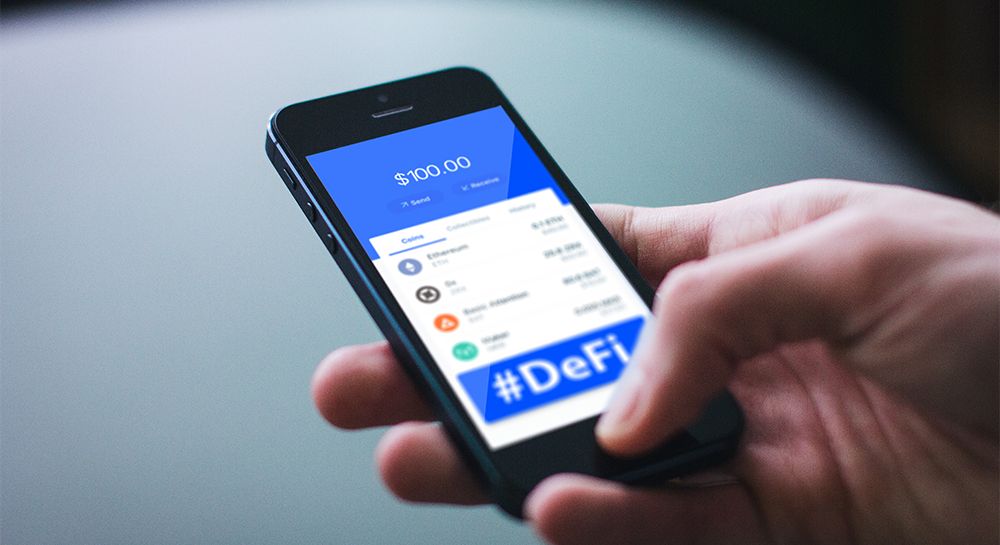Is Ethereum dead in the ditchwater? Or do you believe Ethereum will recover in 2023 and overperform other cryptocurrencies?
Is it a bubble that popped, or is it still one of the best cryptocurrencies to buy?
Ethereum started as a revolution: smart contractsSmart Contracts
Agreements between two parties that self-execute when their terms are met and automatically cancel when their terms are not met.
dApps
Distributed Apps. Applications without centralized control.
ICO
Initial Coin Offering. An event in which a cryptocurrency project “goes public,” selling early coins in exchange for funds.
But when ICOs began cashing-in their millions of dollars of ETH, it crashed to ~$80. Such a monumental slide can’t possibly be recovered from, can it?
I’m passionate about exploring all coins: good, bad, and ugly. That's why in this article, I’ll review Ethereum’s pros and cons. I’ll also analyze the future of Ethereum and whether or not it will remain a good investment for the years to come.
Let’s dive in!
Is Ethereum dead in the ditchwater? Or do you believe Ethereum will recover in 2023 and overperform other cryptocurrencies?
Is it a bubble that popped, or is it still one of the best cryptocurrencies to buy?
Ethereum started as a revolution: smart contractsSmart Contracts
Agreements between two parties that self-execute when their terms are met and automatically cancel when their terms are not met.
dApps
Distributed Apps. Applications without centralized control.
ICO
Initial Coin Offering. An event in which a cryptocurrency project “goes public,” selling early coins in exchange for funds.
But when ICOs began cashing-in their millions of dollars of ETH, it crashed to ~$80. Such a monumental slide can’t possibly be recovered from, can it?
I’m passionate about exploring all coins: good, bad, and ugly. That's why in this article, I’ll review Ethereum’s pros and cons. I’ll also analyze the future of Ethereum and whether or not it will remain a good investment for the years to come.
Let’s dive in!
Companies used initial coin offerings to raise some $5.5 billion in cryptocurrency-based funding. Most of these billions of dollars were tied up in Ethereum.
Table of Contents
- Ethereum Was a Bubble
- Ethereum is No Longer a Bubble. It is Mature.
- Ethereum Mining Is a Waste of Energy
- Ethereum 2.0 Will Cut Energy By 99%
- Ethereum Cannot Scale Worldwide
- New Methods of Scaling Are Being Worked On
- Long List of Ethereum’s Competitors
- Launch of 2.0 Will Keep Ethereum Ahead of the Game
- Ethereum Was Hacked Before
- Addition of New Security Safeguards
- So, What Future for Ethereum?
- How do I invest in Ethereum?
- Stay Safe in the Crypto World
Ethereum Was a Bubble
Ethereum was for sure a bubble that popped. Its growth in 2017 and 2018 crash can be easily explained by economic factors. Simple supply and demand.
A Techcrunch article points out that in 2017 “companies used initial coin offerings (ICOs) to raise some $5.5 billion in cryptocurrency-based funding.” Most of these billions of dollars were tied up in Ethereum -- the main funding mechanism behind almost every ICO. This is a tremendous supply.
When these ICOs began building their companies -- they had to sell their ETH for fiatFiat
Paper money issued by governments as default currency. The US Dollar, Japenese Yen, Chinese Yuan, and Euro are all fiat currencies.
And when the price of ETH started to drop in 2018, these ICO firms began feeling stressed about Ethereum’s future. They needed this money to fund operations and to build their projects. So they began cashing out even faster.

Millions of Ethers were sold brutally in 2018. Supply overwhelmed demand by far. Even more so when governments began imposing regulations on companies raising capital through an ICO -- which shrunk demand further.
This one-two punch lead to a tremendous decrease in Ethereum price and led the media to assume that Ethereum was dead.
Ethereum is No Longer a Bubble. It is Mature.
The whole Ethereum market and ecosystem went through a gigantic correction. But it’s still alive. It’s still kicking. The future of Ethereum looks bright.
In fact, ICOs are still around. There are over 5,000 ICOs listed and operating this year. Many of them are still accepting investment through Ethereum.
The difference is that these new ICOs are more often complying with government regulation. They are producing products to showcase before their initial coin offerings - as opposed to most ICOs taking place in 2017.
They are focused not only on raising money but also on being transparent, verifiable, legally-compliant companies. Lots of these ICOs are limiting themselves to accredited investors only in order to stay compliant.
The recent maturity of the market leads my Ethereum price prediction upwards.
| Suits Best For | Deposit Methods | Competitive Advantage | ||
 |
 |
Bank Transfer, Credit Card, Amex, 25+ Crypto | Deposit $5, Get $25 Free * using a US bank account or Amex |
Get The Abra App |
 |
  |
Bank Transfer, BTC, ETH, LTC, BNB | Lowest Fees to Buy Bitcoin (0.10%) | Visit Binance Jersey |
 |
 |
Bank Transfer, Credit Card, Wire Transfer, 15+ Crypto | Deposit $100, Get $10 Free | Go To Coinbase |
 |
 |
100+ Crypto | Lowest Fees to Buy Ethereum (0.10%) | Trade from 100+ Crypto |
Ethereum Mining Is a Waste of Energy
Ethereum runs on a proof-of-work (PoW) system, which means people around the world secure the Ethereum blockchain using their GPUGPU
Graphics Processing Unit. Hardware that can be used for mining some cryptocurrencies.
Mining Rig
A mining rig is a computer used for mining cryptocurrencies. The rig might be a dedicated computer or it could be a computer that fills other needs too.
In PoW, all participants race to secure the network. They add new ETH transactions to the blockchain’s globally distributed ledgerDistributed Ledger
A list of transactions that exists on every computer that elects to run blockchain software.
Block
A segment of data recorded on the blockchain that can contain transactions and other information.
It’s a “winner takes all” contest. The more computational firepower you have, the better your odds to get ETH.
Unfortunately, due to this, the Ethereum network consumes more electricity than many countries.
Based on a report published by the International Energy Agency, if Ethereum were a country, it would rank higher than Mongolia in terms of energy consumption.
If Ethereum keeps on like this in the future, do you think Ethereum will recover anytime soon? Probably not. If it continues -- Ethereum is dead, and my Ethereum price prediction would be negative.
Ethereum 2.0 Will Cut Energy By 99%
There’s hope, as Ethereum’s leaders adopted a revolutionary plan in June 2018.
Vitalik Buterin and his team decided to build an entirely new blockchain for the Ethereum network — one that operates solely via a proof-of-stake (PoS) system.
The proof-of-stake system does not require cutting edge GPU’s, stacks of mining rigs or heavy power grids. PoS only requires people to “stakeStaking
The act of locking up one's coins or tokens to help verify transactions for cryptocurrencies with Proof of Stake consensus mechanisms. Stakers earn staking rewards for providing this service.

People who wish to earn from Ethereum would no longer put their capital into GPU’s and electricity but into buying Ethereum itself.
Indeed, the same transactions take place on PoS as on PoW. The difference is the lack of mining rigs and electricity consumption. In the case of Ethereum, people who “stake” 32 ETH or more will be rewarded with freshly mintedMinting
The process by which users on a PoS blockchain verify transactions and receive new coins for their participation.
This solution, dubbed as Ethereum 2.0, makes a world of difference for Ethereum’s programmers because it will cut energy by 99%. If the team can bring ETH 2.0 online successfully, the new code could complete transactions using just 1 percent of the energy consumed today.
If this happens, Ethereum’s future will be brighter. Hell, it could even skyrocket, and we might not read “Ethereum is dead” on the internet for a long time. Instead, Ethereum price predictions will reach higher and higher amounts on the internet.
Ethereum Cannot Scale Worldwide
Part of Ethereum’s rise in price and popularity began due to its promise of becoming a world computer.
Ethereum offered smart contractsSmart Contracts
Agreements between two parties that self-execute when their terms are met and automatically cancel when their terms are not met.
But a huge roadblock soon presented itself. Ethereum does not scale with its current implementation. This has led the crypto community to believe that Ethereum will fail, sooner or later.
Even halfway popular decentralized applications (DappsdApps
Distributed Apps. Applications without centralized control.

Indeed, the Ethereum blockchain currently allows only 15 transactions per second. Visa supports up to 45,000.
This scalability problem is a significant barrier to mainstream adoption. It has led many experts to believe Ethereum was dying -- and their Ethereum price predictions were near zero.
New Methods of Scaling Are Being Worked On
Ethereum is a technology. Technologies are dynamic; They change.
The internet would not be a worldwide phenomenon if we still gained access through a dial-up modem on phone lines at snail speeds.
Likewise, the Ethereum blockchain is inline for several updates to scaling that should help Ethereum recover shortly.
1. Sharding
ShardingSharding
The process by which a full database is split into smaller databases called shards. Sharding helps with the scalability of cryptocurrencies.
The goal of sharding is to move away from requiring full nodesNode
A computer that runs a cryptocurrency’s software and validates transactions.
2. Off-chain transactions
Another ambitious capacity-expanding technology takes a page from bitcoin’s Lightning Network. The Lightning Network is a top-layer to the blockchain which mirrors how the multi-layered internet works.
Thanks to the lightning network, most transactions will be made on an off-chain channel dedicated to micropayments. This would lift the burden from the underlying Ethereum blockchain.
Lightning-style ‘off-chain’ transactions could bring Ethereum’s capabilities to the levels which people were hoping and expecting: fast and nearly limitless while still not requiring users to trust a central authority.
Scaling solutions are well in the works. If they pull through, I believe Ethereum will surely recover one day or another.
 |
  |
 |
| Deposit $5, Get $25 Free | Enjoy the market's lowest fees | Deposit $100, Get $10 Free |
| Get the Abra App | Visit Binance Jersey | Go to Coinbase |
Long List of Ethereum’s Competitors
Since Ethereum exploded on the market, many copycats have followed and promised extraordinary improvements.
The success of these companies could be a major reason why Ethereum will fail and end up being a terrible investment. Any high Ethereum price prediction will be for nothing if these Ethereum Killers succeed.
1. COSMOS (ATOM)
Cosmos aims to become an “internet of blockchains” and propose to solve major blockchain problems once and for all.
Cosmos’s architecture consists of several independent blockchains called “Zones” attached to a central blockchain they’ve labeled the “Hub.”
By combining independent blockchains, they will gain great transactions speeds and compatibility.

2. Cardano (ADA)
Charles Hoskinson, the co-founder of Ethereum, decided to create his own smart contract platform: Cardano.
Cardano offers scalability and security through layered architecture -- much like off-chain scaling solutions for Ethereum.
Cardano’s approach is unique in the cryptosphere. The company prides itself on building through a scientific philosophy and peer-reviewed academic research.
3. EOS
EOS aims to become not a blockchain but rather a decentralized operating system and to have an incredibly high transaction speed to support industrial-scale decentralized applications.
The driving force behind EOS is Dan Larimer, who also founded BitShares and Steemit. EOS raised nearly $4 billion during a year-long ICO. During the ICO, they made two bold claims to capture people’s interest:
- The ability to conduct millions of transactions per second.
- Zero transaction fees.
If any of these “Ethereum killers” make good on their promises, Ethereum may die.
Launch of 2.0 Will Keep Ethereum Ahead of the Game
Ethereum’s founder Vitalik Buterin is focused on Ethereum 2.0 and referred to it as “a combination of a bunch of different features that we’ve been researching, talking about and actively building for several years and that are finally coming together into this one coherent whole.”
These words are worth considering, even more since Ethereum has a first mover advantage in smart contracts.
Source: ConsenSysMedia YouTube Channel
One of these features is Plasma. Plasma is a system where users transact with each other without going through the main blockchain. They agree to open a private, secure communication channel which they will use to do things like exchange cryptocurrency, play games, and even use smart contracts.
When they are done, the history will be added to the main blockchain in just a single transaction. The consequence is simple: Ethereum will scale and remain competitive.
If Vitalik and his team can pull this off, my Ethereum price predictions will be bullishBullish
Optimistic about the future of a cryptocurrency’s price.
Ethereum Was Hacked Before
Technically, Ethereum itself wasn’t hacked. A part of it was. This part was called the DAODAO
Decentralized Autonomous Organization. An organization governed by smart contracts founded to allocate funds to cryptocurrency projects.
In May 2016, users could deposit money to the DAO and get returns which were calculated from the money the DAO made.
The DAO raised $150M in ETH when its price was at ~$20 in spring 2016. But the code wasn’t secure.
No one knew there was a problem. Until one day, someone figured out a way to drain the DAO out of $70 million worth of Ethereum.
Many at the time said Ethereum was dead. But nothing similar has happened since.
However, could it happen again? If it does, this will be an excellent reason why Ethereum will fail for real.
Addition of New Security Safeguards
After the incident, a hard forkFork (Hard)
A change in a cryptocurrency’s software that makes it incompatible with the original version. For example, any block size increase in the Bitcoin protocol constitutes a hard fork.
This was achieved with a new smart contract that would allow investors in the DAO to make refund requests for lost Ether.
Since then, many smart contracts have been written to prevent such “hacks” from happening again.

Keep in mind that in May 2016, Ethereum was still very new. Years have passed. Many new smart contracts have been developed.
Nowadays, new Ethereum DappdApps
Distributed Apps. Applications without centralized control.
If I were using Ethereum’s security level to make a price prediction -- my prediction would be quite positive.
So, What Future for Ethereum?
We’ve seen both sides of the coin. Ethereum faces monumental challenges: wasted energy, scalability, competition, and security.
But there’s also hope brought forth with Ethereum’s proof-of-stakeProof of Stake
PoS. A method of minting new coins and securing a platform by allowing users to stake their coins and receive more coins as a reward. Introduced as an energy efficient alternative to PoW (Proof of Work).
Sharding
The process by which a full database is split into smaller databases called shards. Sharding helps with the scalability of cryptocurrencies.
If nothing else, we can be certain that Ethereum is dynamic. It will change. The future Ethereum -- the one we will use in 5 years -- will be an improved version of the one we use now.
Ethereum's 2018 crash can also be explained by economic factors. Most ICOs built their tokens on Ethereum’s blockchain and collected funds in Ethers, which they had to sell for fiatFiat
Paper money issued by governments as default currency. The US Dollar, Japenese Yen, Chinese Yuan, and Euro are all fiat currencies.
At the same time, a global increase of interest in cryptocurrency happened in 2017 and drove the price of Ether too high, too fast.
But it doesn’t mean the future of Ethereum is dark.
My final word is this: if Ethereum’s team manage to fulfill their promises, and with the advantage of being the first mover in the market, I'm confident Ethereum will recover and remain a top cryptocurrency in the future.
How do I invest in Ethereum?
There are hundreds of ways to buy Ethereum. Here’s a summary of our favorite exchanges (those we love and regularly use) to help you get started.
| Suits Best For | Deposit Methods | Competitive Advantage | ||
 |
 |
Bank Transfer, Credit Card, Amex, 25+ Crypto | Deposit $5, Get $25 Free * using a US bank account or Amex |
Get The Abra App |
 |
  |
Bank Transfer, BTC, ETH, LTC, BNB | Lowest Fees to Buy Bitcoin (0.10%) | Visit Binance Jersey |
 |
 |
Bank Transfer, Credit Card, Wire Transfer, 15+ Crypto | Deposit $100, Get $10 Free | Go To Coinbase |
 |
 |
100+ Crypto | Lowest Fees to Buy Ethereum (0.10%) | Trade from 100+ Crypto |
Stay Safe in the Crypto World
Buying the best cryptocurrencies -- like Ethereum -- is not enough to be a successful crypto investor.
Countless promising investors saw their crypto journey end brutally because they did not pay attention to security.
If you own $500 or more worth of cryptocurrencies and are serious about it, you should consider purchasing a hardware wallet.
| Supported Cryptos | Benefits | Price | ||
 |
1000+ |
|
~$70 | Get a Ledger Nano S |
 |
1000+ |
|
~$120 | Get a Ledger Nano X |
Do You Want More Awesome Resources?
- Should I buy Ethereum?
- 50 Mistakes Cryptocurrency Investors Make
- The 11 Best Cryptocurrencies to Buy
- The 5 Best Crypto Sports Betting Sites
Good luck!
- Own a website? Link to this article!
- Willing to spread the love? Share it on social!




















